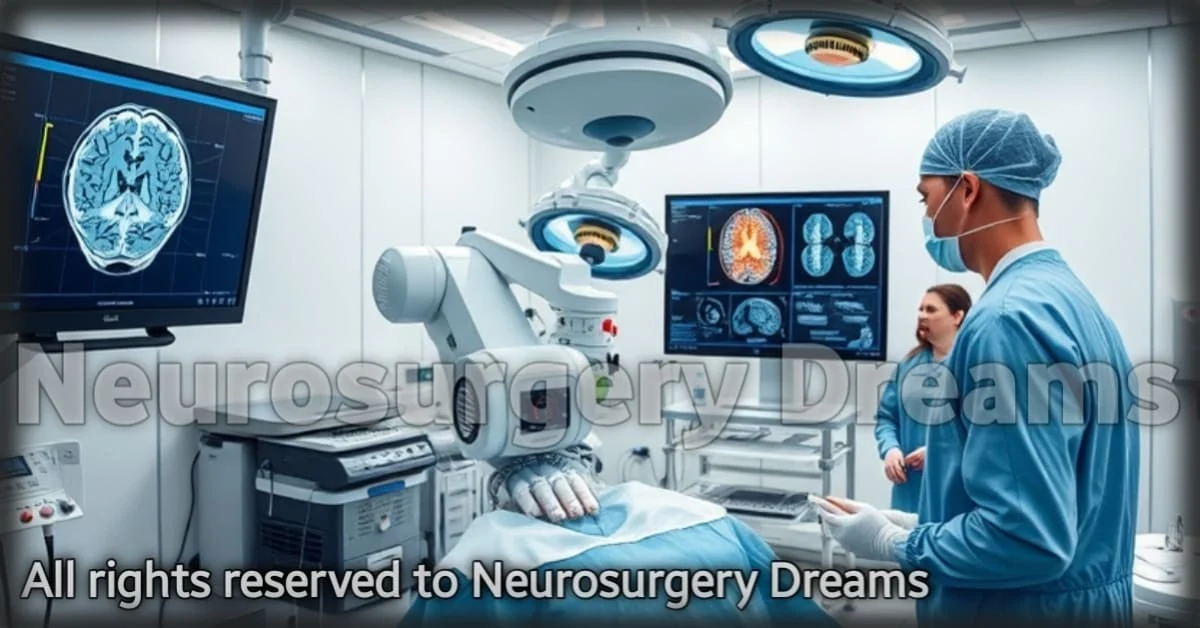Advances in Neurosurgery for Traumatic Brain Injury: New Frontiers in Diagnosis and Treatment
Introduction
Traumatic brain injury (TBI) is a major global health concern, with millions of individuals affected each year. It can range from mild concussions to severe brain damage, leading to long-term neurological impairment and even death. Neurosurgery plays a crucial role in the management of TBI, offering potential life-saving interventions and improving outcomes for patients. This article explores the recent advancements in neurosurgical techniques and how they are changing the landscape of TBI diagnosis and treatment.
The Burden of Traumatic Brain Injury
Traumatic brain injury is a leading cause of death and disability worldwide, with road traffic accidents, falls, and violence being the most common causes. TBI can result in a wide range of neurological deficits, including cognitive impairments, motor dysfunction, memory loss, and emotional disturbances. The severity of the injury is often classified based on the Glasgow Coma Scale (GCS), which assesses a patient's level of consciousness. Despite advances in medical care, TBI remains a significant challenge due to the complexity of the brain and the limited ability of neural tissue to repair itself.
Diagnosis of Traumatic Brain Injury
Accurate diagnosis is crucial for the effective treatment of traumatic brain injury. Modern diagnostic techniques have greatly improved the ability to assess the extent of brain damage and guide treatment decisions. The most commonly used diagnostic tools include:
- Computed Tomography (CT) Scans: CT scans are the primary imaging technique used in the emergency setting to assess the presence of brain injuries, such as hemorrhages, contusions, and fractures.
- Magnetic Resonance Imaging (MRI): MRI offers more detailed imaging and is particularly useful in detecting diffuse axonal injuries, which are not always visible on CT scans.
- Intracranial Pressure Monitoring: In severe cases of TBI, monitoring the intracranial pressure (ICP) is essential to prevent brain herniation and guide therapeutic interventions.
In addition to these imaging techniques, advances in biomarkers and genetic testing are also helping clinicians assess the extent of brain injury and predict outcomes. These tests provide valuable information that can guide treatment decisions and improve prognostication for patients with TBI.
Neurosurgical Interventions in Traumatic Brain Injury
Neurosurgical intervention is often required for patients with severe TBI, particularly those with life-threatening conditions such as brain hemorrhages, skull fractures, or elevated intracranial pressure. Surgical procedures in TBI management have evolved significantly over the years, with new technologies and techniques improving the effectiveness of treatment.
1. Craniotomy for Hemorrhage Evacuation
One of the most common surgical procedures performed in the treatment of TBI is craniotomy, which involves the removal of part of the skull to access the brain. This procedure is used to evacuate hematomas (blood clots) or contusions that put pressure on the brain. By relieving this pressure, craniotomy can prevent further brain injury and improve patient outcomes. In some cases, craniotomy is combined with other procedures, such as decompressive craniectomy, to enhance the effectiveness of the intervention.
2. Decompressive Craniectomy
Decompressive craniectomy is a procedure in which a large portion of the skull is removed to allow the brain to swell without causing additional damage. This is often done in cases of severe brain swelling or when intracranial pressure becomes dangerously high. While the procedure can be life-saving, it also carries risks, including infection, cerebrospinal fluid leakage, and neurological deficits. However, with appropriate patient selection, decompressive craniectomy can significantly improve survival rates and reduce long-term disabilities.
3. Minimally Invasive Neurosurgery
Minimally invasive techniques have become increasingly important in the management of TBI. These techniques involve smaller incisions and the use of advanced imaging systems to guide the surgeon during the procedure. One example is the use of endoscopic surgery to evacuate hematomas or treat brain injuries. Minimally invasive procedures offer the advantage of faster recovery times, reduced risk of infection, and less damage to surrounding tissues.
4. Neurostimulation and Rehabilitation
In addition to surgical intervention, neurostimulation techniques and rehabilitation play a critical role in the recovery of patients with TBI. Functional electrical stimulation (FES) is a type of neurostimulation that can help patients regain motor function by stimulating muscles through electrical impulses. This technique is particularly useful for individuals with motor deficits due to TBI, as it can improve mobility and prevent complications such as muscle atrophy.
Rehabilitation is a crucial part of the recovery process for patients with TBI. Physical, occupational, and speech therapy are essential for helping patients regain independence and improve their quality of life. Advances in robotic rehabilitation systems are also helping patients with severe brain injuries regain function through repetitive task training and intensive therapy.
The Future of TBI Treatment
The future of TBI treatment lies in the integration of new technologies, improved surgical techniques, and personalized medicine. Some of the most promising areas of research in TBI treatment include:
- Neuroprotective Agents: The development of drugs that can protect brain cells from further damage after injury is a major area of research. These agents could help reduce inflammation, promote healing, and prevent secondary injury.
- Stem Cell Therapy: Stem cell therapy holds potential for repairing damaged brain tissue and promoting regeneration of neural cells. While still in the experimental stages, stem cells could offer new hope for patients with severe TBI.
- Advanced Neuroimaging: Future developments in neuroimaging technology may allow for even more detailed and accurate assessments of brain injury, leading to more precise treatment plans and improved outcomes.
With these advancements, the future of traumatic brain injury treatment looks brighter than ever, offering the potential for better outcomes, faster recovery, and improved quality of life for patients.
Conclusion
Advances in neurosurgery have led to significant improvements in the diagnosis and treatment of traumatic brain injury. New surgical techniques, neurostimulation therapies, and innovative technologies are providing new hope for patients with TBI, allowing for better management of this complex condition. As research continues to progress, we can expect even more breakthroughs in the field of TBI treatment, improving the lives of millions of individuals worldwide.

